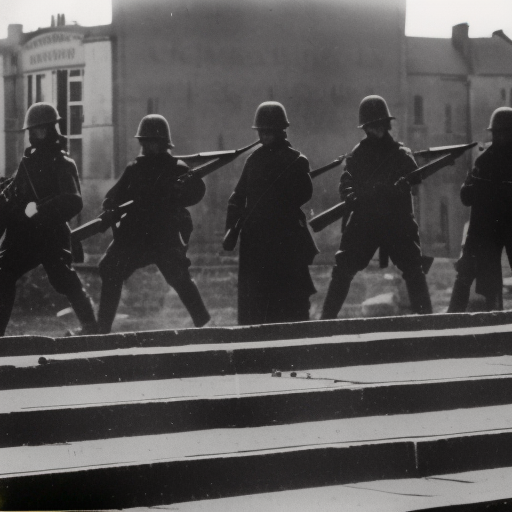Battle of Amiens: A Turning Point in World War I
The Battle of Amiens, fought from August 8 to August 12, 1918, was a decisive battle on the Western Front during World War I. It marked the beginning of the Hundred Days Offensive, a series of successful Allied offensives that ultimately led to the end of the war. The battle was a coordinated effort between British, Canadian, Australian, and French forces, and it showcased the effectiveness of combined arms tactics and the use of tanks, aircraft, and infantry.
The Plan
The plan for the Battle of Amiens was devised by General Sir Henry Rawlinson, the commander of the British Fourth Army. The objective was to break through the heavily fortified German lines near the city of Amiens and advance towards the strategic railway hub of Roye. The plan involved a surprise attack, with a short but intense artillery barrage followed by a rapid advance by infantry, tanks, and aircraft.
The Battle
On the morning of August 8, 1918, the Allies launched their attack. The initial artillery barrage caught the Germans off guard and inflicted heavy casualties. The British Third Army, led by General Sir Julian Byng, made significant gains on the southern flank, while the Canadian Corps advanced in the center and the Australian Corps on the northern flank. The French First Army provided support on the southern flank.
The use of tanks played a crucial role in the battle. The British deployed over 500 tanks, including the new Mark V and Whippet tanks. These armored vehicles provided cover for the advancing infantry and helped to break through the German lines. The tanks were supported by a large number of aircraft, which provided close air support and disrupted German communications.
The Breakthrough
By the end of the first day, the Allies had made significant progress. They had advanced up to 8 miles and captured over 16,000 German prisoners. The surprise and speed of the attack had overwhelmed the German defenses. The following days saw continued advances, with the Allies capturing key positions and pushing the Germans back.
The Impact
The Battle of Amiens was a turning point in World War I. It demonstrated the effectiveness of combined arms tactics and the importance of coordination between infantry, tanks, aircraft, and artillery. The battle also marked the beginning of a series of successful offensives by the Allies, which eventually led to the German surrender in November 1918.
The Battle of Amiens had a profound impact on the morale of both the Allied and German forces. The Allies gained a renewed sense of confidence and momentum, while the Germans were demoralized by the loss of territory and the high number of casualties. The battle also highlighted the changing nature of warfare, with tanks and aircraft playing an increasingly important role.
Conclusion
The Battle of Amiens was a decisive victory for the Allies and a significant turning point in World War I. It showcased the effectiveness of combined arms tactics and the use of tanks and aircraft. The battle marked the beginning of the Hundred Days Offensive, which ultimately led to the end of the war. The Battle of Amiens remains an important event in military history and is remembered as one of the most successful offensives of World War I.












